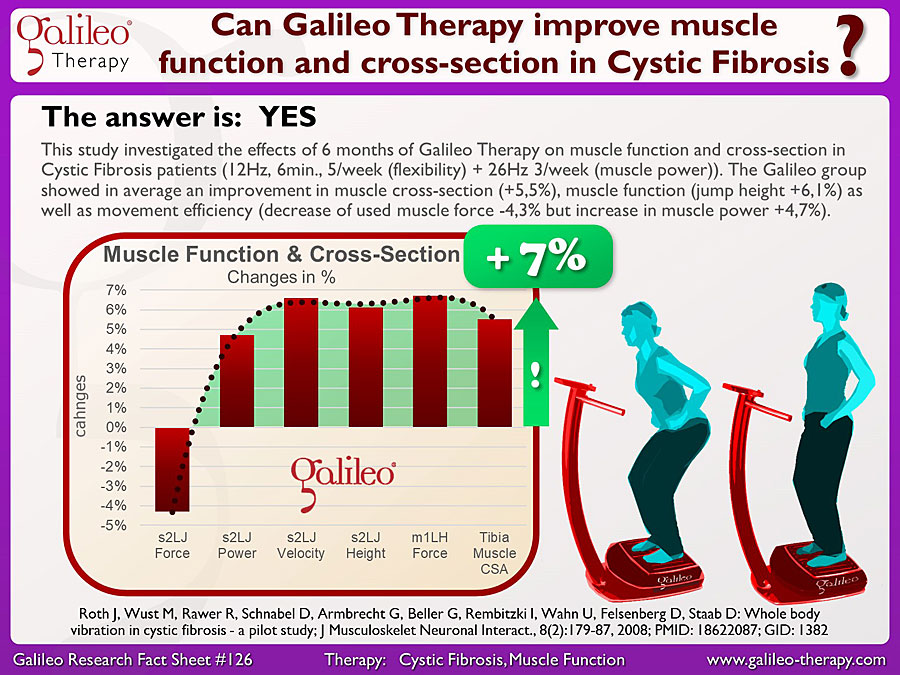Galileo Research Facts No. 126: Can Galileo Therapy improve muscle function and muscle cross-section in Cystic Fibrosis?

This pilot study documented the effects of 6 months of Galileo Therapy on muscle function and muscle cross-sectional area in Cystic Fibrosis patients. The Galileo Therapy group received 5 times per week Galileo Therapy focusing on flexibility (6 minutes, 12Hz) and 3 times per week focusing on muscle power and muscle mass (6 minutes, up to 26Hz, up to 9kg additional load) – so 48 minutes Galileo Therapy per week altogether. Primary focus was improvement of the flexibility of the very stiff upper body.
The results showed in addition to the already reported improvements in muscle function (#GRFS120an average improvement of the muscle cross-section by 5.5%, an improvement of the maximum voluntary force (m1LH) by +6,7%, in improvement of muscle function (velocity +6,6%, jumping height +6,1%) and an improved movement efficiency at the same time (reduction of the movement specific peak force by -4.2% and increase muscle power (+4,7%) and jumping height (+6,1%) at the same time).
This study is a good example for the fact that a decrease of movement specific peak force (in this case the peak force during lift-off of the counter movement jump) does not need to be a negative effect – in this case the patients got more flexible allowing them a larger degree of counter-movement, therefore a longer counter-movement phase which enabled them to decrease the used force but increase the main movement outcomes (power, velocity, jumping height) and therefore allowing a much more efficient moment pattern.
#GRFS126 #GalileoTherapy #CysticFibrosis #MuscleCrossSection #MuslePower #MuscleForce #s2LJ #m1LH #MechanoStimulation #QualityOfLife #MovementQuality